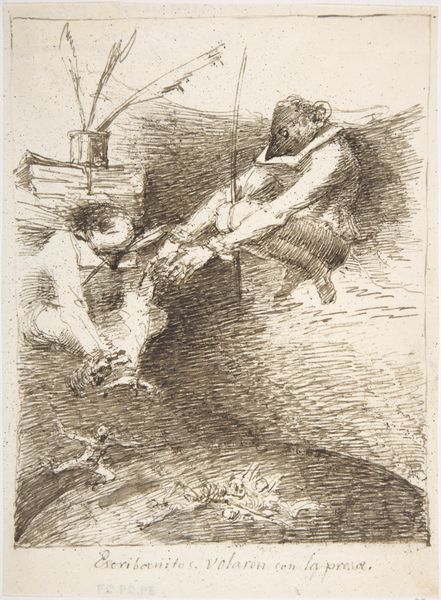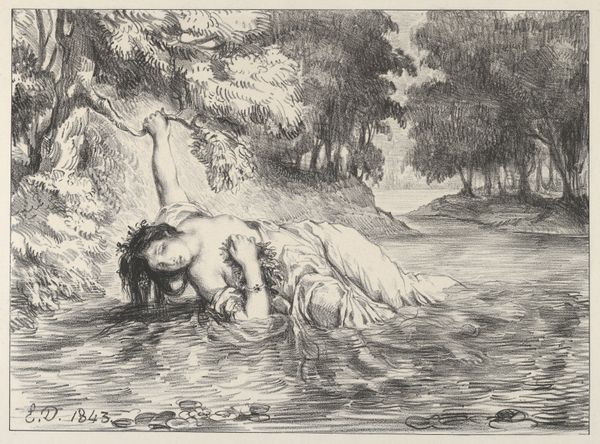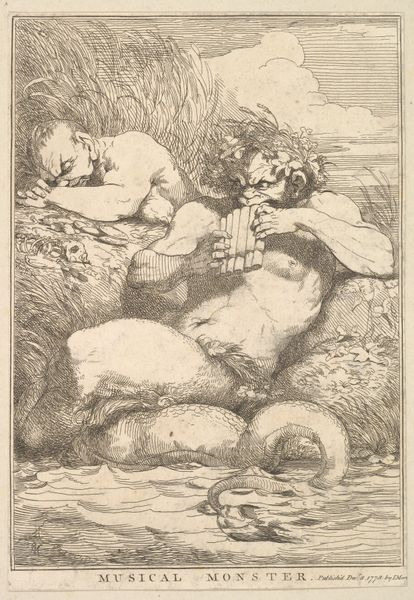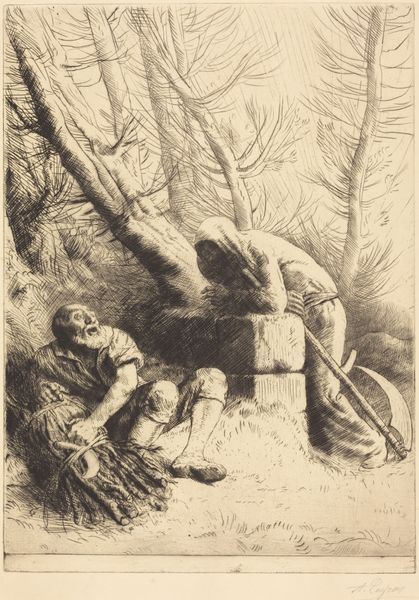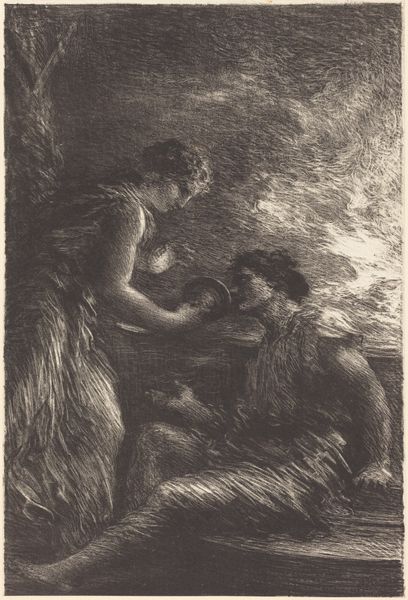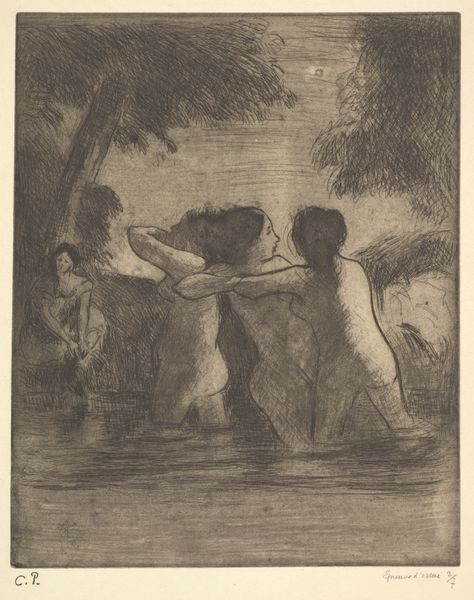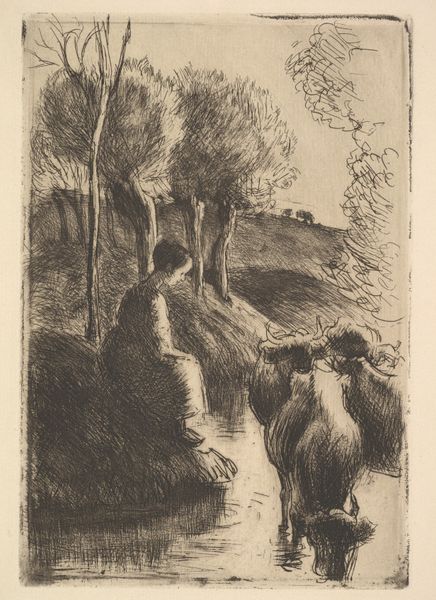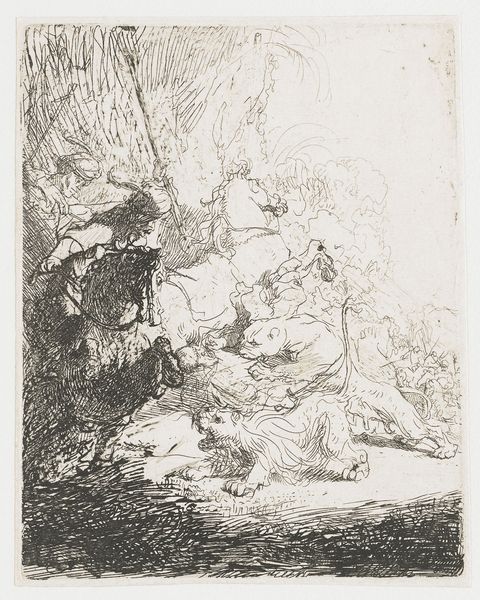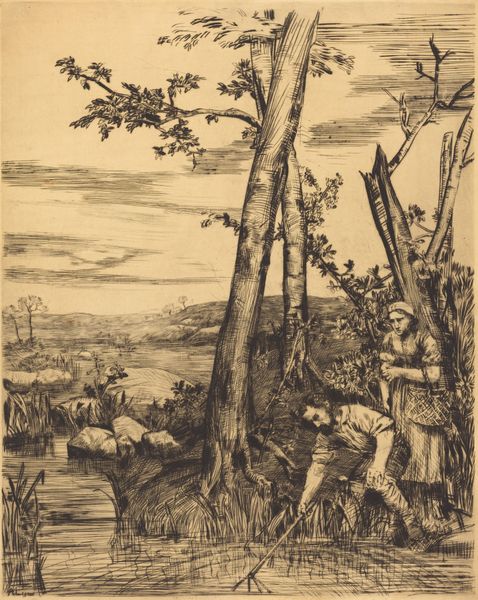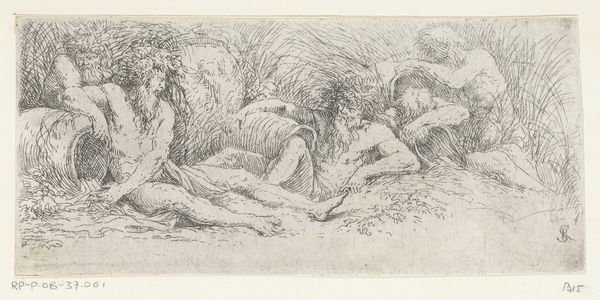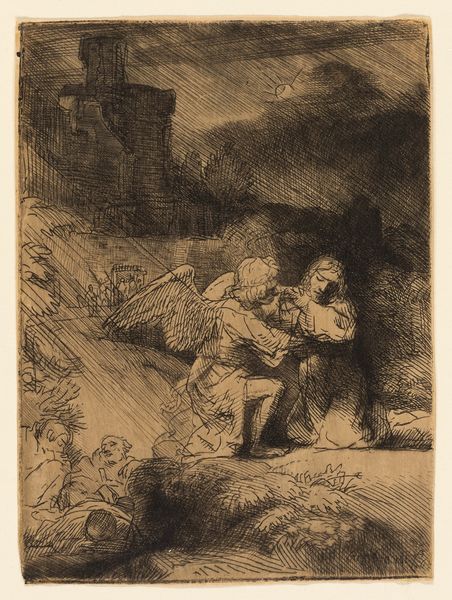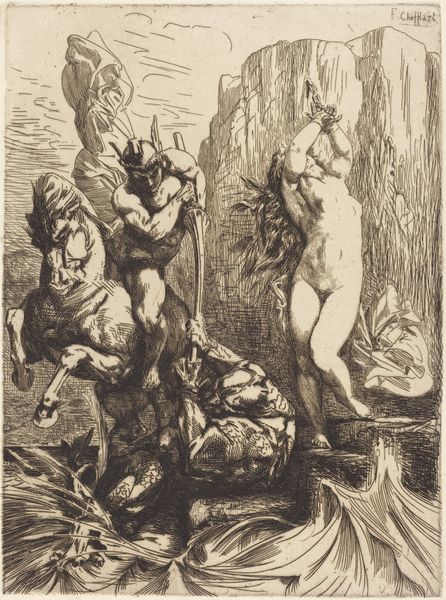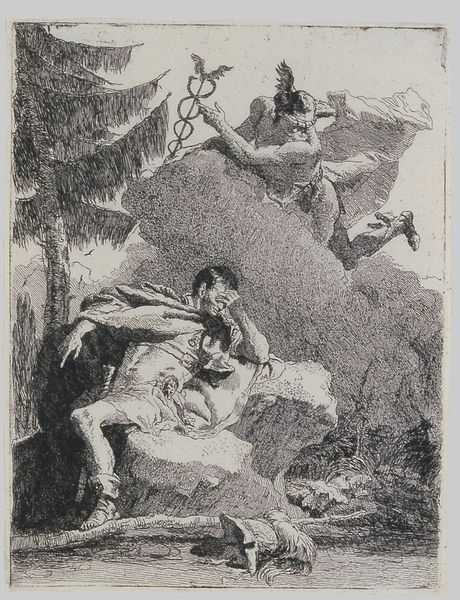
Dimensions: 10 7/8 x 8 7/8 in. (27.6 x 22.5 cm)
Copyright: Public Domain
Curator: Here we have Jean-François Millet's drawing, "Roadworkers at Lunch," which he worked on between 1845 and 1857. You can see it here at the Metropolitan Museum of Art. Editor: It's...exhausting just to look at. A thick, weary charcoal grey settles over everything. I see labor etched in every stroke, every slumped body. Curator: Absolutely. Millet, particularly associated with the Barbizon school, consistently turned his attention to the lives of rural workers. Notice how the landscape itself seems to press down on the figures. Editor: The tools scattered about, almost carelessly strewn across the foreground, are also quite revealing. Picks and shovels, simple tools doing simple work, with no heroic pretense to be seen anywhere. How unusual for the time. Curator: Precisely. It’s a study in fatigue, really. One man lies sprawled, face down, utterly spent, another sits with his head in his hands... the very posture conveys an immense weariness. It resonates with the grueling work itself, the demanding labor and the lives spent in seemingly endless pursuit of such tasks. Editor: And that tree, skeletal and looming. Is it me, or does it seem like nature itself is bearing witness to—or perhaps even complicit in—the men's exhaustion? There are romanticized visions of agrarian life and then there is this gritty reality laid out for the viewer using the subtlest range of materials like charcoal, graphite and pencil on paper. Curator: Perhaps you're not far off. Millet often walked that tightrope, didn’t he? He idealized labor by treating its figures as monumental, dignified subjects for high art while holding back little on its realities. The romantic gaze of the time wanted a harmonious unity of humanity and nature, whereas a sharp contrast emerges in this very work through the choice of color or value itself. Editor: There's something brutally honest in his depiction; the artist wants to strip away artifice. Looking closely, I see areas where he used those darker strokes of charcoal almost as expressive contouring, drawing shadows that give these resting laborers immense weight. Curator: Indeed. It begs one to consider the consumption of labor and how the artist brings awareness to that condition through art. Editor: Gazing into those subtle shades I feel...grateful to be in a museum and not toiling under a hot sun! It makes one pause to think. Curator: Exactly, a poignant reminder that art can truly capture not just the scene, but also the spirit and struggle inherent in everyday human experience.
Comments
No comments
Be the first to comment and join the conversation on the ultimate creative platform.
